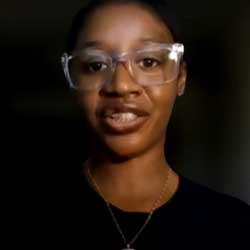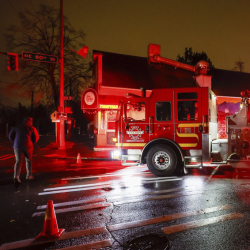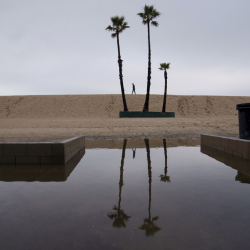 RICHMOND, Calif. -- Angel Leon has learned how to express his feelings through soccer. If he's angry, for example, he'll use that emotion in the game, "not to hurt, but to be more aggressive towards the ball, more energetic."
RICHMOND, Calif. -- Angel Leon has learned how to express his feelings through soccer. If he's angry, for example, he'll use that emotion in the game, "not to hurt, but to be more aggressive towards the ball, more energetic."
But Angel, 13, a player for the Richmond Sol Cobras, doesn't get angry often. In fact, he said anger is exactly the opposite of what he usually feels when he's out on the soccer field, running around with his friends.
"It is a fast playing game," said his teammate, Kanai Salvador-Anderson, also 13. "You forget about your troubles and let out all of your emotions."
But there is one thing that both Angel and Kanai don't like about soccer: They don't get to practice it enough, and it's not for a lack of desire. Limited by a finite number of available soccer fields in the city, the Cobras only meet for practice twice per week.
Richmond Sol was founded in 2003 and is one of only two officially organized soccer clubs that exist in the city. The second is called Richmond United Soccer Club, founded in 1995. Between the two clubs, around 800 Richmond children participate year-round in soccer clinics and competitions, outings and mentoring activities.
The people who make up the staffs of the two soccer clubs are all unpaid volunteers – they do what they do for the love of the game, and out of a sense of community service. And despite the number of youth currently being served, soccer club volunteers agree that it's only the tip of the iceberg. They could do much more, they say, if it weren't for one big problem: There are simply not enough places in Richmond to practice soccer.
According to the 2010 Richmond Parks Master Plan, 16 different locations in the city are regularly used to play soccer, but only two of them are "purpose-built soccer fields" – places intended to be used for the sport. Those are located at Country Club Vista Park and at Martin Luther King, Jr. Park. The other 14 places where soccer players practice are either multi use fields or green areas in different parks around the city.
"Currently, overuse of the existing fields is resulting in their deterioration, in some cases to the point where they are virtually un-playable," reads the plan.
The study, published last December, also says that the city has a deficit of 19 soccer fields, based on a desired standard ratio of one field per 3000 inhabitants. In a city where the Latino population, with a strong soccer tradition, is now 40 percent and growing, the lack of fields is more perceptible.
"Back in the 80's, softball and baseball were the popular sports here," said Diego Garcia, vice-chair of the Recreation & Parks Commission and president of Richmond Sol. "The late 90's was when soccer started to become popular, when the World Cup came to the U.S. Now, it is not the most popular sport, but it is a fast growing sport."
Garcia estimates that there are between 4,000 and 5,000 children and adults in Richmond that are playing soccer. In addition to the two major soccer clubs, which are affiliated with national and regional soccer leagues, there is an informal club called Richmond Eclipse, and various after school programs that boast soccer teams.
The two organized soccer clubs, along with every other sport club in the city, face another difficulty. The cost of renting one of the city-run fields or one of the fields that belong to the school district, like the ones at Richmond or Kennedy high schools, may cost as much as $500 a day.
"When you are a smaller group and you are starting out without ties to the city, it makes it hard," said Gelberg Rodriguez, president of the Richmond United Soccer Club. "Sometimes, teams have to pay $50 to $75 to play for a couple of hours."
The fee that each participant pays to be part of the club covers that cost, and also the cost of uniforms, trophies and other accessories. But the fee could soon go up to $150 a year.
Save the Clubs
Juan Reardon has a 10 year-old daughter that plays with the Richmond United Soccer Club. He said he got tired of watching his daughter "avoiding the holes in the ground" as she plays, so he decided to act.
"There are close to 3,000 children who do one type of organized sport in Richmond, but that is the minority of the children in Richmond," said Reardon. "The others do not participate because there is not enough capacity to welcome them and to facilitate their participation. They need help with tuition, transportation, and the basic issue is there is no field capacity."
Reardon, Garcia and Rodriguez joined forces with six representatives from other baseball, football and track clubs in Richmond, and are now the Richmond Safe Athletic Fields for Education (SAFE) Coalition. Together, with Richmond Progressive Alliance as a facilitator, they are asking the city for more, and stronger, support.
"We are fulfilling a shared obligation that we have as parents and community members," Reardon remembered saying during a meeting with the City Council and school district representatives back in February 2011. "(But) we need free or lower cost access to the fields, for all the sports."
Negotiations between the clubs and the City Manager have been ongoing since then, and even though it looked like they were close to an agreement, it has been hard to find a way to satisfy both parties.
"We say we want to use the fields for free," Reardon said. "They say, 'I understand that you need support, but we believe that if people don't pay they don't appreciate (the fields).'"
But Richmond City Manager Bill Lindsay said appreciation is not the main reason for imposing a fee on the clubs, which are using the facilities exclusively -- that means that during their practices and games, the rest of the public cannot use the field. Hence the fee.
The latest round of negotiations between the SAFE coalition and the City Manager's office established that the clubs would pay 8 dollars per year, per player if the player is a Richmond resident, and 14 dollars per year per player if the player comes from outside Richmond.
Members of SAFE agreed to pay the fee, but asked that the money be saved by the city and then redirected to each club, to be used to finance their various club-related costs.
Lindsay, on the other hand, said the fees should be used to "lease field space from the School District, make improvements to city-owned facilities, and fund special projects and events for the collective benefit of participating SAFE members."
No final resolution has yet been agreed to, but both parties are working to reach an understanding.
The debate may also be influenced by the outcome of city elections in November, when residents will decide whether or not sugary beverages like sodas should taxed by the city. If the proposal is approved, Richmond will have some extra money that could be earmarked to fight obesity. And it's not a stretch to think that part of that money could be used to build sports fields.
Even if that money materializes, however, the task of building new city-funded sports fields in Richmond looks daunting.
"It is gonna take us maybe 10 years to close the gap on the lack of fields," said Reardon. "But [the soda tax] will be a good steady income for the city to address this problem."
More Than Soccer
For Angel and Kanai, being club members brings a lot more than just learning soccer. They also learn discipline, how to communicate with their teammates and how to be leaders, by making decisions as a team and putting the team's interest before their own.
"I try to be an example for my brother," said Angel, "so he doesn't end up in places where he should not be."
"Sports for me are a metaphor for life," said Rodriguez. "If you work hard in soccer, you can be successful. If you wanna do well in life you have to work hard. I think a lot of coaches use that metaphor."
Rodriguez is an engineer who graduated from UC Berkeley, and he said that soccer and the Richmond United Soccer Club are tools that he and the other volunteers use to motivate Richmond kids to go to college.
"Getting our kids to go to college is a big challenge, because our kids have a low high school graduation rate," said Rodriguez. "How do we make our kids understand that they have to go to college to have a better life? In the Latino community, in general, that is a problem."
Portland and Seattle
Free Subscription to Breaking News
Free Subscription to Breaking News






















































































































































































































































































































































